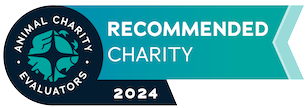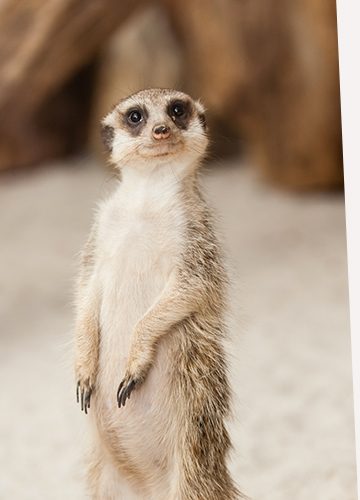For animal advocates, the depth and breadth of animal issues, and the way they seemingly touch every aspect of our day-to-day life, can make it feel like the most pressing issue of our time. Animals are slaughtered by the tens of billions for food every year, and used by the millions in dozens of other ways, from clothing to entertainment to animal experimentation to the wildlife trade, and so much more. It can often feel very overwhelming, and it is. For many, animal advocacy becomes a primary focus, a category of issues that we must work on to the exclusion of all others, because billions of lives — and indeed, the fate of our planet — may depend on it.
Meanwhile, we continue to face barriers of social, economic, gender, and racial inequality — issues which have roots in white supremacy, patriarchy, and colonialism. When it comes to social justice in the broad sense, we are far from having every issue “solved” — and deciding on what to prioritize can often feel like an impossible task.
The good news is that justice is not a zero-sum game. We do not need to work at solving animal injustice to the exclusion of social justice issues, nor do we need to ignore the plight of animals to address social injustice. In fact, when we pull at the threads of animal protection, we discover that it is intertwined with many threads of social justice, and we can see how working towards other forms of justice can help humans as well as animals. When we pull at the threads, we understand clearly that we can — and we must — work on animal and social justice in tandem, not separately.
Be sure to check out the companion blog for more about our editorial choices, and what we hope to include in future updates.
Connections
Whether you are new to animal advocacy or consider yourself a veteran, the graphic below may illuminate something you’ve never thought of before. If this sort of thing is new to you, don’t be discouraged: life is a learning process and the interconnectedness of social justice and animal justice is something that can be difficult to wrap your head around.
One way we can represent overlapping oppression is via a Venn diagram; it could also be represented as a web, or a recursive flow chart — each of these would communicate different aspects, but none would do so completely. The main thing to remember is that no one issue exists in isolation, and addressing one issue doesn’t automatically address all others. It’s important to think about justice in a holistic way and approach issues accordingly.
Farming & Labor
Like capitalism in general, agriculture — both plant and animal — benefits from having its most brutal and dangerous aspects hidden away from public view. The meat and vegetables that you see in your typical grocery store chain usually come from massive farming operations that rely on volume to make money. Feeding the world means that agriculture operates at a massive scale, perhaps larger than any other industry. Because of this massive scale, and the desire to make profits, labor issues abound at every level.
The Covid-19 pandemic shone a light on the meatpacking and slaughter industries in particular. Since the beginning of the pandemic, meatpacking plants have been sources of community outbreaks, and those outbreaks, in turn, have helped to highlight the generally bad working conditions of these plants, and their reliance on labor from racialized and marginalized groups. In the graphic below, we look at safety issues in slaughter, including some of the ways Covid-19 helped to bring these issues to the fore.
Communities & The Environment
Unfortunately, the injustices inherent in industrial farming don’t end at the fences of the farms. Industrial farming, especially that of animals, is incredibly hard on the surrounding environment. From manure lagoons to water and energy use to rampant GHG emissions, industrial animal farms are responsible for tremendous amounts of environmental degradation, directly impacting the communities that surround them, and far beyond.
Gender, Meat, & The Movement
Issues of gender permeate innumerable different aspects of our lives. Animal advocacy deals with myriad gender inequality issues, from sexist advocacy tactics, to inequality in leadership, to pay disparities, to sexual harassment within and across organizations.
Meanwhile, consuming animal products often gets framed as a personal choice and has become intertwined with personal politics on a variety of levels, which is a logical extension of its framing as part of capitalism. One of the most common ways we can see this is in the gendered divide that exists in terms of the consumption of meat, and the ways that meat-eating is framed as a masculine activity while veg*nism is portrayed as feminine.
Whiteness & Animal Advocacy
Animal advocacy’s relationship with whiteness is complex and multifaceted. Veganism as a term was coined by Donald Watson, a white British man, in 1944. It was the logical extension of the animal rights movement which had been growing out of England since the late 1800s, but, like many “inventions” claimed by white folks, it was not new: many cultures around the world had been practicing some form of animal-free cuisine for hundreds (if not thousands) of years. There is a certain amount of cultural chauvinism at play here — one that extends into white animal advocates’ critiques of other countries as “backwards” or “barbaric” for engaging in animal consumption that is different from a white cultural norm. These critiques reveal how white veganism is intertwined with a colonial mindset.
To this day, animal advocacy is seen as a largely white movement in Europe and North America. This is a double-edged sword: this stereotype is accurate in many ways, but it also erases the work of so many vegans and animal advocates of color who are part of the movement and working for both animal and human liberation.
Of course, animal advocates don’t just exist in Europe and North America. Our movement is a global one, and there are millions of advocates around the world who work hard for animals every day. In the graphic below we look at just a few examples of animal advocacy movements and groups from around the world.
Making Change
Where do we go from here? These are complex issues, and this is by no means a comprehensive list of all of the ways that social justice and animal justice overlap and intertwine with each other. Indeed, taking both animal justice and social justice issues seriously means always casting a critical eye on the ways these overlaps arise, get entrenched — and especially how they can begin to be untangled. In the graphic below, we step aside and highlight a variety of organizations that are working to make the world a better place, with a holistic view of justice that we could all take a cue from.
This Faunalytics Fundamental has provided a visual overview of the complex ways that animal advocacy overlaps with other social justice issues, but we’ll be the first to admit this resource is incomplete. Be sure to check out the accompanying blog post to understand how we made our choices of what to include and what to leave out.
We hope that what we’ve presented here encourages advocates to ask questions about how they can incorporate social justice into their work and become more holistic in their advocacy. This could include asking questions like:
- How can we bridge the knowledge gaps that exist about these issues, especially within the movement?
- How can the animal advocacy movement holistically incorporate social justice into our work, as well as our measures of impact and effectiveness?
- As we seek to address inequities in our movement, what are key issues that can be addressed immediately as we work towards broader goals?
- How can white / cis / straight / male advocates be better allies within organizational structures, and in on-the-ground advocacy?
There is so much more work to be done to give animal advocates the insight they need to choose the most effective ways to strive for animal and social justice. Please donate generously now to help us keep bringing you and other advocates this crucial information.
Faunalytics would like to thank A Well-Fed World for their generous support
of our Animal & Social Justice Fundamentals.
Special thanks to Jaya Bhumitra for her consultation and review of the narrative text of this resource,
and thank you to Maneesha Deckha for her advice and time.



